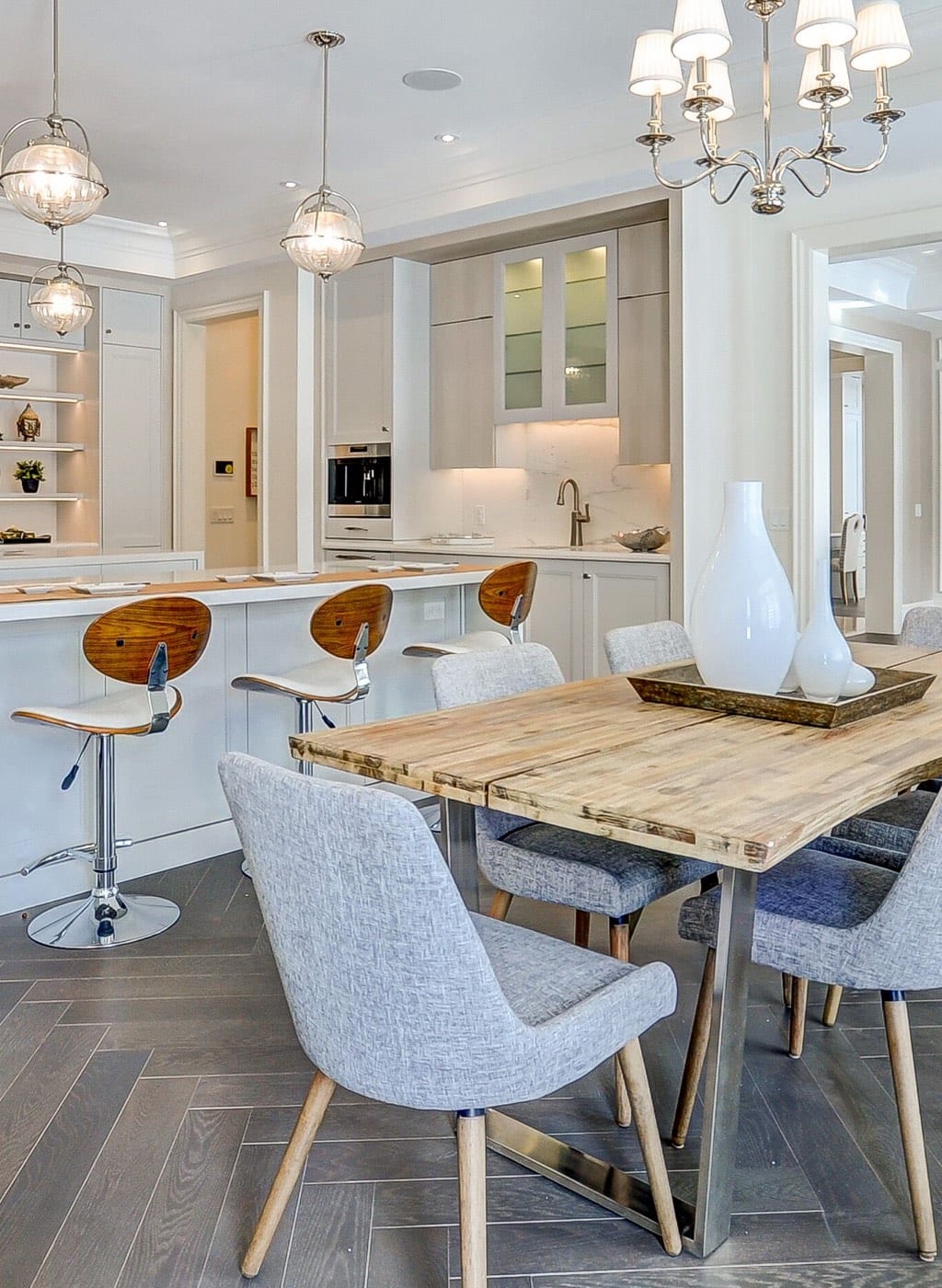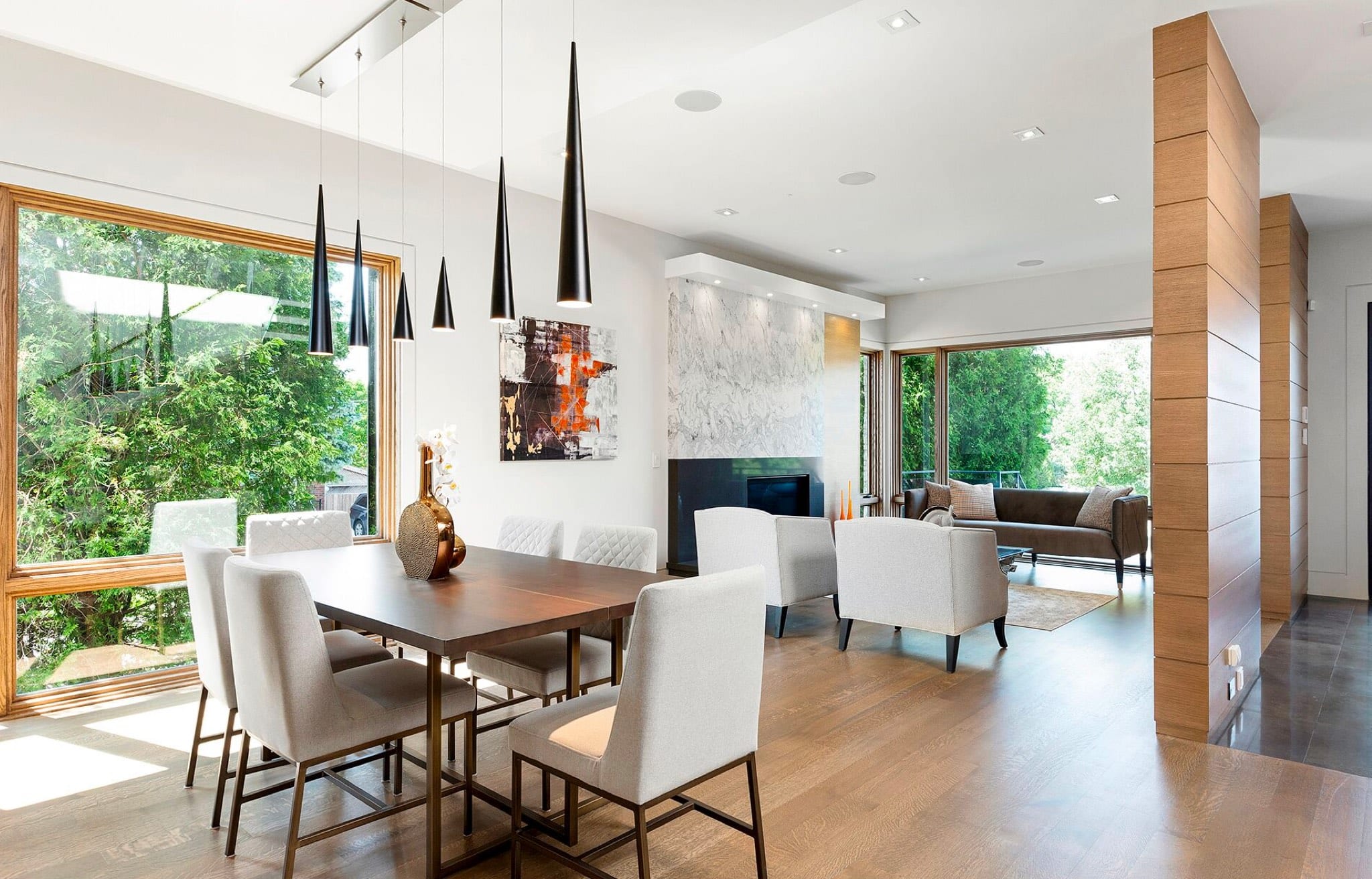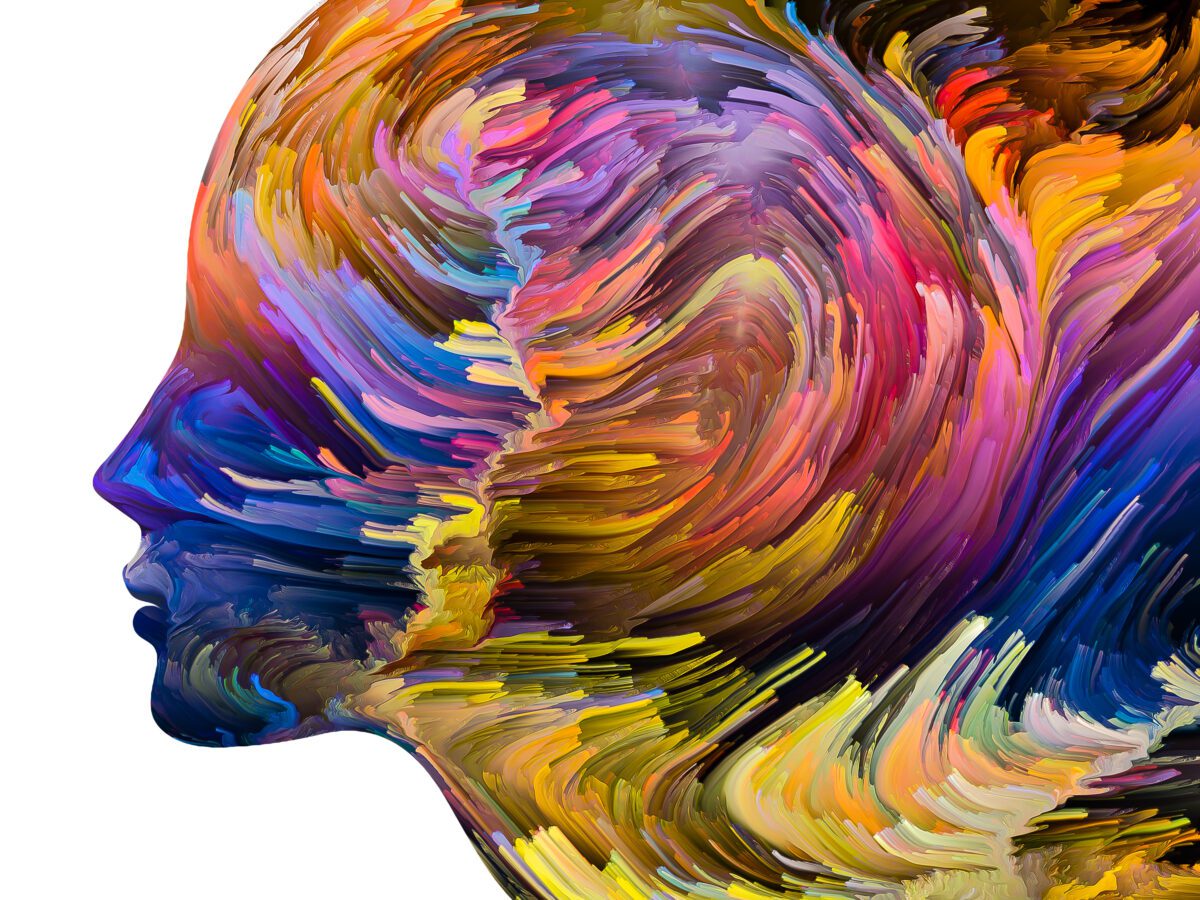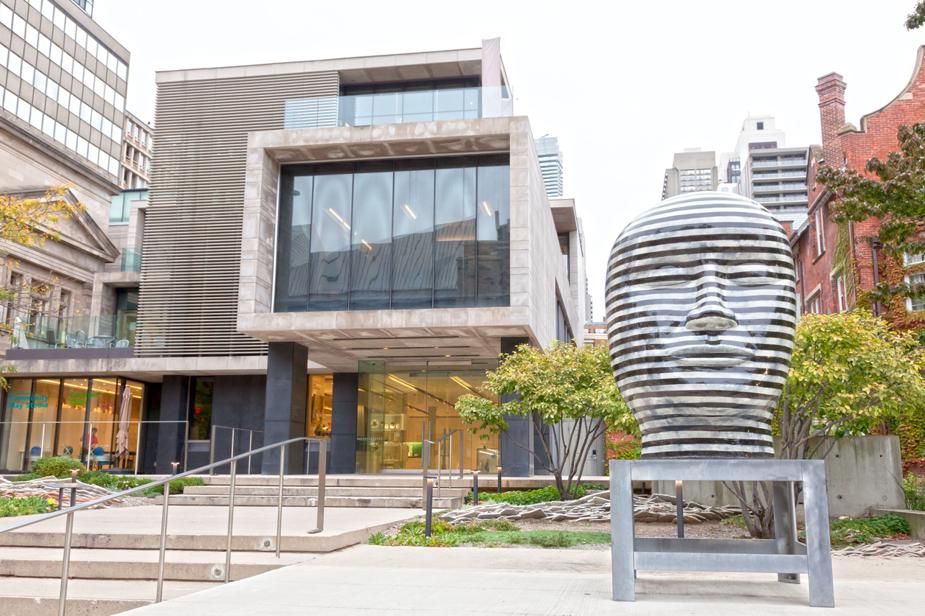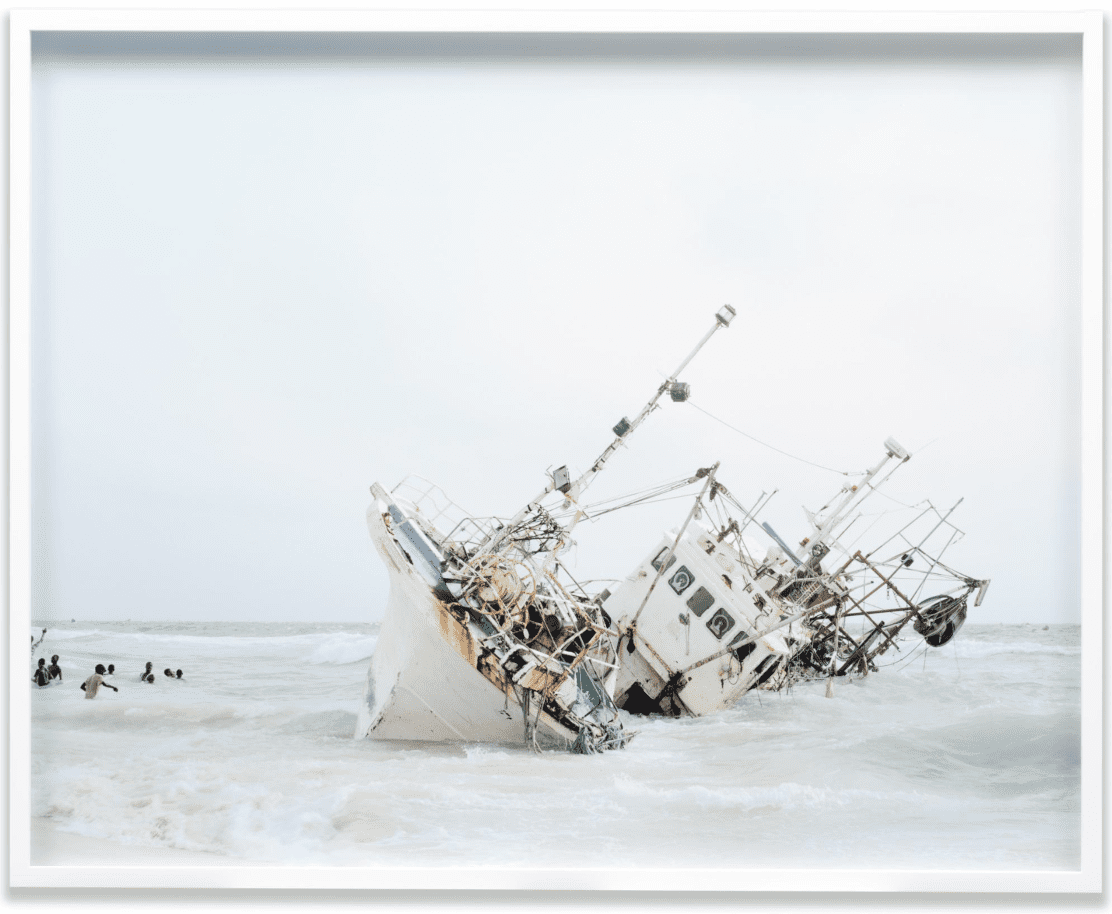
Exhibition marks addition of 28 artworks to the AGO Collection
We Are Story: The Canada Now Photography Acquisition brings together a collection of image-based works by 10 contemporary artists to the Art Gallery of Ontario. These artworks, recently added to the AGO Collection, engage visitors to explore the creativity and range within contemporary photography in Canada.
Curated by Marina Dumont-Gauthier (Curatorial Fellow) with the AGO’s Curator of Photography, Sophie Hackett, We Are Story features artworks in a variety of image-based media, ranging from camera-less prints to drone photography.
Support for the new acquisitions comes from the Canada Now Photography Acquisition Initiative, a project conceived in the spring of 2020 by photographer Edward Burtynsky and gallerist Nicholas Metivier, in response to the economic impact of the COVID-19 pandemic on artists in Canada. It is supported by proceeds from the sale of Burtynsky’s 2020 photographic portfolio Natural Order.
“From the night skies of Nunavut to the streets of Damascus, these works are evidence of photography’s capacity to transform objects, landscapes, and perspectives. These artists remind us how we are shaped by and also actively shape the worlds we inhabit,” says Hackett.
Organized as a series of artist spotlights, spread over two galleries, the works on view range widely in material and in approach – from magazine cut-outs to printed fabric, conceptual and documentary, performance document to war witness, in two and three dimensions.

A large collage by Aaron Jones (b. 1993; lives in Toronto), entitled Holding my Grandmother’s Oranges (2021) opens the exhibition. One of his most ambitious works to date, it blends images from books, magazines, and other materials, including a postcard promoting California oranges that used to hang in his late grandmother’s home. The collage reflects on the many ways in which images are a key part of “the ways we build ourselves,” as Jones stated in a 2019 interview.
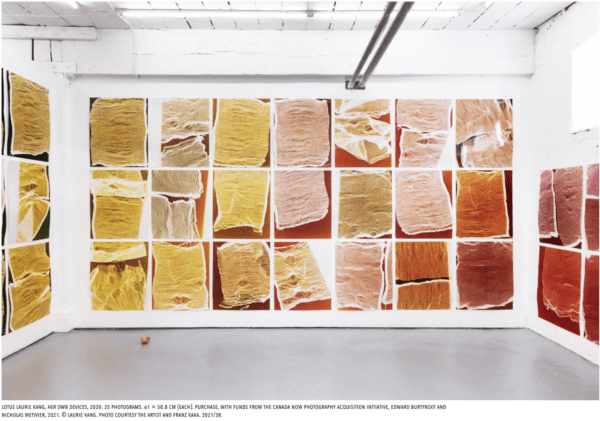
Adjacent to Jones, is an installation of 35 photograms, entitled Her own devices (2021) created by Laurie Kang (b. 1985, lives in Toronto). These images – made by placing objects on sensitized paper without a camera– depict various mesh bags gathered by the artist. Each bag takes on a unique form through variations in contrast, depth, sharpness, and detail, and together they reflect Kang’s ongoing interest in the body as a vessel.
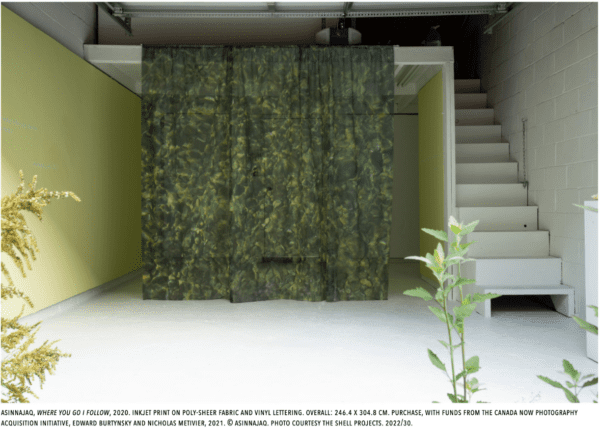
Suspended from the ceiling of Robert & Cheryl McEwen Gallery, is Where you go I follow (2020), an abstracted image printed on sheer fabric by Inuk artist asinnajaq (b.1991, lives in Tiohtia:ke (Montreal). Featuring a close-up view of the shallow waters at the edge of James Bay, the artist reorients the scene, presenting it vertically. Visitors moving through the space cause the fabric to ripple and shift.
It was during a residency in Kamloops, British Columbia, that Gabrielle L’Hirondelle Hill (b. 1979, lives in Vancouver) braided a field of grass on a hill beside a highway to create Braided Grass (2013). Her intervention, which was filmed and photographed, powerfully blends traditional craft and contemporary performance. In shaping the rough grass into smooth plaits, a skill requiring patience and time, she acknowledges “the long relationship between our bodies and the land.”
A highly abstracted image of an eight-pack of Lucky brand beer, Lucky X Lager 8 (2012-2016) by Raymond Boisjoly (b. 1981, lives in Vancouver) is the second work by the artist to join the AGO Collection. Here, Boisjoly scans and magnifies the bottoms of the cans, transforming a three dimensional everyday object into minimalist towers. Lucky Lager, which moved between breweries in the United States and Canada, inspired Boisjoly’s research on the geographical migration of popular imagery.
From his series The Sum of All Parts comes a diptych by Jalani Morgan (born 1981, lives in Toronto). Part of Morgan’s ongoing documentation of social justice movements, these two vinyl banners depict an overhead view of a “die-in” that took place at Yonge and Dundas Square, following the killing of Eric Garner in 2014 by New York City police officers. That original photograph made the front page of the Toronto Star, giving powerful visual form to the burgeoning days of the Black Lives Matter movement in Toronto.
Louie Palu’s (b. 1968, lives in Washington D.C.) series The Fighting Season 1 explores the human impact of war with a selection of 12 prints documenting the conflict in Afghanistan, taken between 2007–2010. Palu offers a nuanced portrait of a contemporary conflict whose outcome remains deeply polarizing.
Viewed from a distance, Tokyo/Damascus (2012) by Iranian-born artist Sanaz Mazinani (b. 1978, lives in Toronto) resembles the ornamentation typically found in Islamic art and architecture. Closer inspection reveals that the image combines two distinct images. Sourced from the internet, one is of the Occupy Movement in Tokyo, and the other is of a Syrian flag waved during the Arab Spring demonstrations.
A striking self-portrait along with seven other photographs comprise a group of images by Inuit artist Robert Kautuk (b. 1971, lives in Kangiqtugaapik) that document his daily life in Kangiqtugaapik (Clyde River), a small community located on the east coast of Baffin Island. Mostly shot using a drone camera, Kautuk’s body of work brings together community Elders, researchers, or climate scientists engaging with the land, while highlighting the role of Indigenous artists in the fight against climate change.
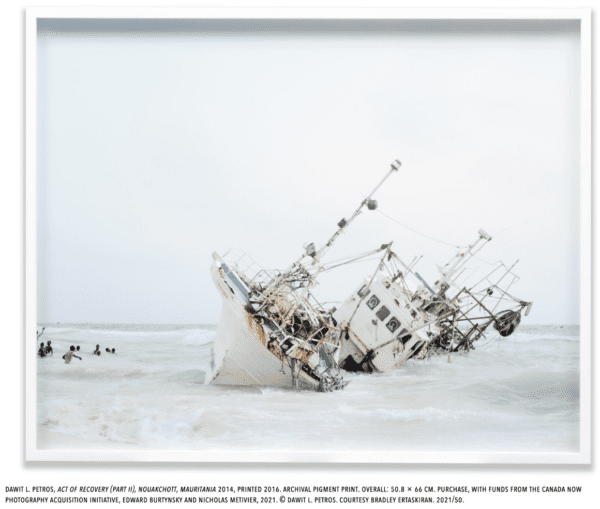
Visitors confront the image of a foundering ship in Dawit L. Petros’ (b. 1972, lives in Chicago and Montreal) Act of Recovery (Part II), Nouakchott, Mauritania. Part of a larger body of work entitled The Stranger’s Notebook [2016], Petros recalled what prompted him to photograph this moment in Mauritania: “We are used to seeing shipwrecks on the shores of Europe […] But this shot seemed to invert that notion […] It wasn’t yet another displaced African body. That made it feel powerful.”
Though wide-ranging in scope, Dumont-Gauthier is quick to find common ground. “They are the product of incredible artists pushing the boundaries of how we communicate, how we live and understand our world and what stories we choose to capture, remember and share.”
We Are Story: The Canada Now Photography Acquisition will remain on view through July 23.

